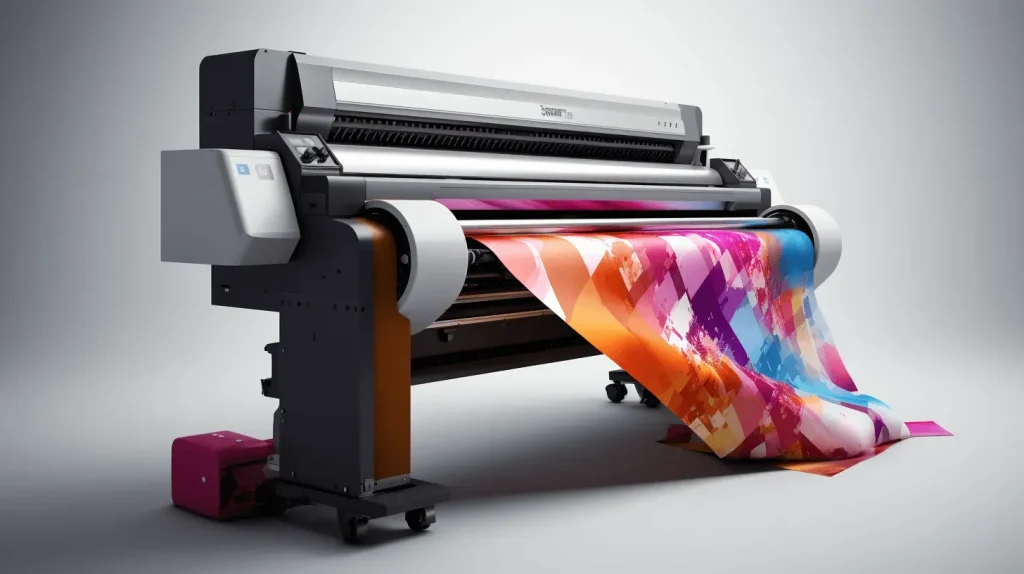In the competitive world of garment printing, **DTF printing**, or Direct-to-Film printing, has emerged as a game-changer that offers vibrant colors and unparalleled detail. This innovative method allows for designs to be printed directly on a special film, enabling a seamless transfer onto a variety of fabrics. Unlike traditional methods such as **Direct-to-Garment (DTG)** printing, **screen printing**, and **sublimation**, DTF printing offers impressive versatility, making it suitable for both intricate designs and diverse textiles. As the demand for custom printing techniques grows, DTF stands out for its efficiency and cost-effectiveness, allowing businesses to meet customer needs with precision and flair. This introduction to DTF printing sets the stage for a deeper understanding of its advantages and comparisons to other printing methods.
When exploring the realm of fabric printing, the term **Direct-to-Film (DTF)** can also be understood through its essential attributes as a transfer printing method. This modern technique streamlines the design process by allowing for high-quality prints on a range of textiles, including cotton and polyester blends. In a market where traditional techniques like **DTG printing**, **screen printing**, and **sublimation printing** are well established, DTF printing brings a unique flair and efficiency. As businesses seek innovative solutions in custom printing, DTF represents a pivotal advancement in technology that fosters creativity and product diversity. This introductory perspective sets the tone for a comprehensive exploration of DTF and its significant place within the printing industry.
Understanding DTF Printing Essentials
**Direct-to-Film (DTF)** printing has emerged as a game-changer in the realm of textile printing, particularly noted for its exceptional capability to produce intricate designs with vibrant colors. Unlike traditional methods that often limit color choices and fabric types, DTF allows for an expansive palette that meets the demands of modern custom apparel needs. This technique involves printing directly onto a special film, which enables the reproduction of detailed graphics and text before being heat-pressed onto the garment. Such flexibility positions DTF printing not just as a method for traditional t-shirts but also for hoodies, hats, and even home textiles.
In addition to its artistic merits, DTF printing also shines in production efficiency. It allows batches of prints to be made simultaneously, significantly speeding up turnaround times for custom orders. Without the necessity of screen separation as in screen printing, businesses can meet high-volume demands more readily. Moreover, the ease of set-up and minimal waste further enhances DTF printing’s appeal, making it an attractive option for both large print shops and start-up businesses venturing into the custom printing landscape.
Comparative Analysis: DTF vs. DTG Printing
When it comes to **Direct-to-Garment (DTG)** printing, both methods offer high-quality prints, but they cater to different needs within the custom printing market. DTG is primarily designed for printing elaborate designs directly onto garments, yielding great detail particularly on cotton fabrics. However, where DTF thrives is in its broader compatibility with various material types, including polyester and blends, thus expanding its use case. This makes DTF particularly advantageous for businesses looking to diversify their offerings without changing their printing method.
Moreover, DTF printing’s efficiency in managing multiple prints at once stands in contrast to the slower process of DTG, which often requires meticulous setup for every single item. The economic viability of DTF is also enticing; for small runs or custom prints, DTF can significantly lower production costs, leading to higher profit margins. Therefore, when comparing the two, businesses must consider their product range, market demands, and operational scalability.
DTF vs. Screen Printing: Benefits of Adaptability
**Screen printing** has long been a staple printing method favored for its durability and cost-effectiveness in larger runs. However, its limitations in design complexity and flexibility present challenges that DTF printing effectively addresses. The need for multiple screens in screen printing can complicate the design process, resulting in higher costs and extended production times, especially for intricate or multi-colored designs. DTF printing, conversely, allows for full-color prints directly onto the transfer film, making it an ideal solution for businesses looking to simplify their workflow while expanding their design capabilities.
Another aspect to consider is the environmental footprint of these methods. DTF printing boasts significant advantages in terms of resource consumption, as it requires less water compared to traditional methods like screen printing. This not only reduces operational costs but also caters to an increasingly eco-conscious consumer base. With sustainability becoming a key consideration, the transition to DTF can resonate well with brands aiming to enhance their environmental commitments.
Sublimation vs. DTF: A Material Compatibility Perspective
**Sublimation printing** is celebrated for its ability to produce stunning, highly durable prints, but it does have limitations, primarily with fabric compatibility. This printing method works best on polyester or polymer-coated substrates, rendering it ineffective for cotton-based fabrics. On the other hand, DTF printing emerges as a powerhouse solution due to its versatility across different materials, allowing designs to be transferred onto an array of fabrics including blended textiles. Consequently, businesses can appeal to a broader audience without being restricted by fabric type.
Additionally, while sublimation creates long-lasting prints that penetrate the fibers of the fabric, the approach DTF uses encapsulates the designs onto the surface. This can lead to vivid visuals that stand out on cotton and cotton blends, attracting customers looking for a unique aesthetic. Therefore, those who seek both durability and versatility in their printing methods may find DTF to be the superior option.
Advantages of DTF Printing for Custom Applications
The **advantages of DTF printing** extend beyond technical aspects; they encompass aspects that deeply impact user experience. For one, the ease of operation is a significant factor, especially in small businesses or personal projects. Unlike other methods that may require elaborate setups or training, DTF is relatively straightforward and can be adopted by anyone with basic knowledge of printing techniques. This democratizes the printing process, allowing budding entrepreneurs or hobbyists to delve into custom apparel creation with confidence.
Additionally, DTF printing enables Print Service Providers (PSPs) to cater to a diverse client base by delivering vibrant prints on different materials. Customers increasingly demand personalized items, and DTF facilitates this creativity without incurring excessive costs. Printing detailed designs in limited runs translates into fulfilling custom orders efficiently and economically, making DTF an appealing pathway to meet growing demands in the custom printing arena.
Embracing Trends in DTF Printing Technology
As the landscape of printing technology evolves, **DTF printing** stands on the brink of innovation. Recent advancements in ink formulation and substrate technology have paved the way for improved color vibrancy and print durability. These changes not only enhance the final product quality but also provide new opportunities for designers to experiment with more complex and rich designs.
Moreover, as the marketplace becomes increasingly competitive, businesses that invest in DTF printing technology are likely to stay ahead of the curve. The ability to seamlessly integrate new techniques and materials can set a business apart as it meets modern consumers’ demands for custom, high-quality products. Continuous improvements in printing technology indicate that DTF is not just a fleeting trend, but a substantive shift that will redefine custom printing strategies for years to come.
Frequently Asked Questions
What is DTF printing and how does it work?
DTF printing, or Direct-to-Film printing, is a modern process that involves printing designs onto a special film. This film is then transferred onto fabrics using heat and pressure. DTF is highly versatile, capable of printing on various materials including cotton, polyester, and blends, and is known for producing vibrant colors and detailed images.
How does DTF printing compare to DTG printing?
When comparing DTF to DTG printing, the main differences lie in material versatility and production speed. DTF can print effectively on a wider range of fabrics, including cotton blends, while DTG primarily excels with 100% cotton. Additionally, DTF allows for quicker production of multiple transfers, making it ideal for high-volume orders.
What are the advantages of DTF printing over screen printing?
DTF printing offers significant advantages over traditional screen printing. It requires less initial setup as it doesn’t necessitate multiple screens for each color, making it more cost-effective for small runs. DTF also handles more colors in a single print, providing greater design flexibility and reduced waste compared to the layered approach of screen printing.
Is DTF printing environmentally friendly compared to other methods?
Yes, DTF printing tends to be more eco-friendly than traditional methods such as screen printing, as it typically consumes less water and produces less waste during the printing process. As sustainability becomes a priority in the printing industry, DTF is gaining recognition for its lower environmental impact.
What fabrics are suitable for DTF printing?
DTF printing is highly versatile, making it suitable for a wide range of fabrics including cotton, polyester, and blends. Unlike sublimation printing, which primarily works with polyester, DTF can effectively print on various textile materials, allowing for more creative options in custom apparel production.
What are the key trends in DTF printing technology?
Current trends in DTF printing technology include advancements in ink formulations and film materials, leading to improved color vibrancy and durability. As digital printing technology evolves, DTF printing is expected to become increasingly popular, providing custom printing solutions that meet a variety of market needs.
| Key Points | DTF Printing | DTG Printing | Screen Printing | Sublimation Printing |
|---|---|---|---|---|
| Quality & Detail | High-quality prints with intricate details. | Exceptional for high-resolution prints. | Limited detail based on color setup. | Deep dye penetration on polyester. |
| Material Versatility | Prints on multiple fabrics (cotton, polyester, blends). | Best suited for cotton fabrics. | Requires separate setups for multiple colors. | Primarily for polyester fabrics only. |
| Speed | Fast production for high-volume orders. | Slower setup per item. | Slower due to multi-layered setup. | Generally quick, but limited to polyester. |
| Setup Cost | Low setup complexity; flexible. | Cost varies with machine. | High due to screen requirements. | No significant initial costs. |
| Environmental Impact | Eco-friendly; less waste. | Lower impact. | High water usage in setup. | Minimal waste, dependent on material. |
Summary
DTF printing is an innovative method that stands out amidst the various garment printing techniques for its ability to deliver vibrant prints across a wider range of fabric types. Its versatility and speed in production make it a favorable choice for businesses looking to meet diverse customer demands. As DTF printing continues to evolve with technological advancements, its potential to revolutionize the custom printing landscape is immense, appealing to both new entrepreneurs and established garment businesses alike.



